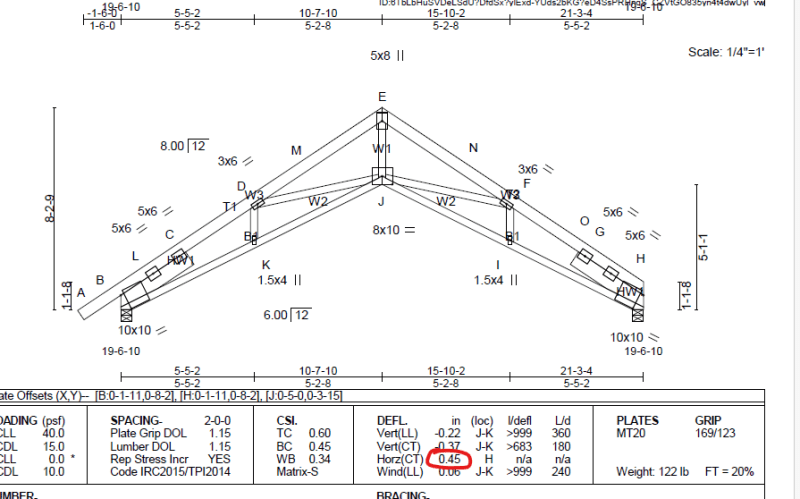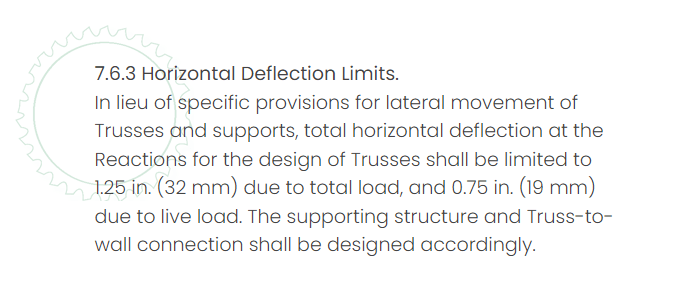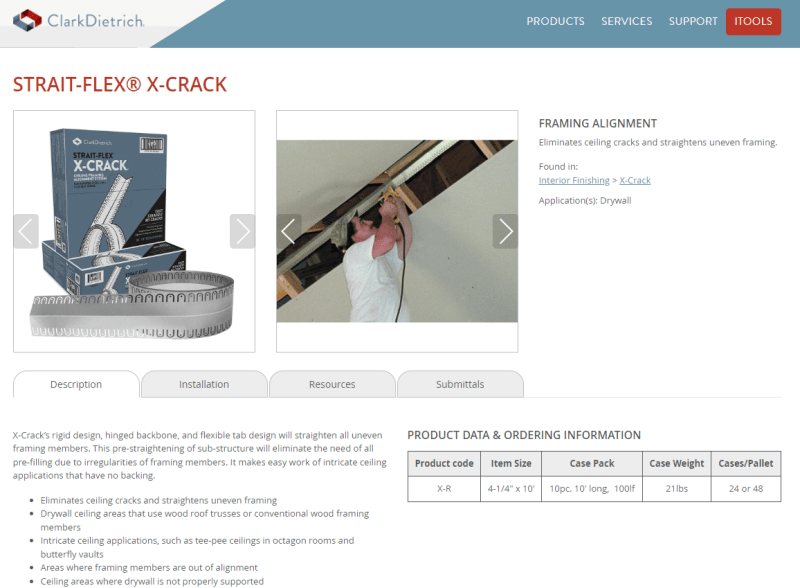We design residential wood framed houses frequently with vaulted interior pitch (known as a scissor truss).
Does anyone have a reference explaning or experience dealing with how far the truss can kickout (horizontal deflection)
before the gyp board ceiling seem rips? In the attached example, the truss deflects -0.45 inches. Which is a LONG
ways and in my opinion impractical to expect a gyp board tape seem to stretch that far.
The goal is to avoid callbacks (Hey Mr Engineer, I have a split in my ceiling) and just overall better quality designs.

Does anyone have a reference explaning or experience dealing with how far the truss can kickout (horizontal deflection)
before the gyp board ceiling seem rips? In the attached example, the truss deflects -0.45 inches. Which is a LONG
ways and in my opinion impractical to expect a gyp board tape seem to stretch that far.
The goal is to avoid callbacks (Hey Mr Engineer, I have a split in my ceiling) and just overall better quality designs.



